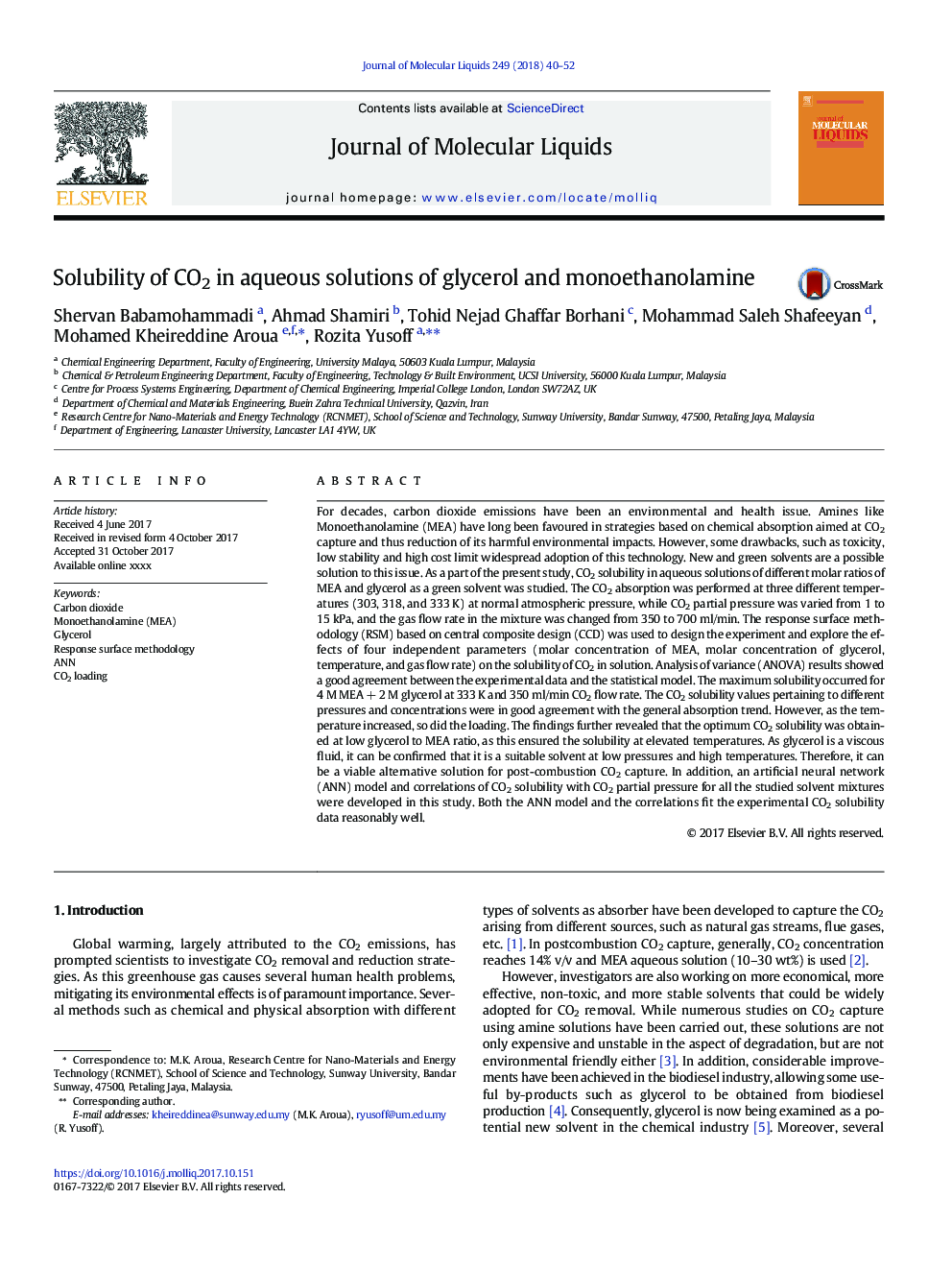| کد مقاله | کد نشریه | سال انتشار | مقاله انگلیسی | نسخه تمام متن |
|---|---|---|---|---|
| 7843472 | 1506522 | 2018 | 13 صفحه PDF | دانلود رایگان |
عنوان انگلیسی مقاله ISI
Solubility of CO2 in aqueous solutions of glycerol and monoethanolamine
دانلود مقاله + سفارش ترجمه
دانلود مقاله ISI انگلیسی
رایگان برای ایرانیان
کلمات کلیدی
موضوعات مرتبط
مهندسی و علوم پایه
شیمی
شیمی تئوریک و عملی
پیش نمایش صفحه اول مقاله

چکیده انگلیسی
For decades, carbon dioxide emissions have been an environmental and health issue. Amines like Monoethanolamine (MEA) have long been favoured in strategies based on chemical absorption aimed at CO2 capture and thus reduction of its harmful environmental impacts. However, some drawbacks, such as toxicity, low stability and high cost limit widespread adoption of this technology. New and green solvents are a possible solution to this issue. As a part of the present study, CO2 solubility in aqueous solutions of different molar ratios of MEA and glycerol as a green solvent was studied. The CO2 absorption was performed at three different temperatures (303, 318, and 333Â K) at normal atmospheric pressure, while CO2 partial pressure was varied from 1 to 15Â kPa, and the gas flow rate in the mixture was changed from 350 to 700Â ml/min. The response surface methodology (RSM) based on central composite design (CCD) was used to design the experiment and explore the effects of four independent parameters (molar concentration of MEA, molar concentration of glycerol, temperature, and gas flow rate) on the solubility of CO2 in solution. Analysis of variance (ANOVA) results showed a good agreement between the experimental data and the statistical model. The maximum solubility occurred for 4Â M MEAÂ +Â 2Â M glycerol at 333Â K and 350Â ml/min CO2 flow rate. The CO2 solubility values pertaining to different pressures and concentrations were in good agreement with the general absorption trend. However, as the temperature increased, so did the loading. The findings further revealed that the optimum CO2 solubility was obtained at low glycerol to MEA ratio, as this ensured the solubility at elevated temperatures. As glycerol is a viscous fluid, it can be confirmed that it is a suitable solvent at low pressures and high temperatures. Therefore, it can be a viable alternative solution for post-combustion CO2 capture. In addition, an artificial neural network (ANN) model and correlations of CO2 solubility with CO2 partial pressure for all the studied solvent mixtures were developed in this study. Both the ANN model and the correlations fit the experimental CO2 solubility data reasonably well.
ناشر
Database: Elsevier - ScienceDirect (ساینس دایرکت)
Journal: Journal of Molecular Liquids - Volume 249, January 2018, Pages 40-52
Journal: Journal of Molecular Liquids - Volume 249, January 2018, Pages 40-52
نویسندگان
Shervan Babamohammadi, Ahmad Shamiri, Tohid Nejad Ghaffar Borhani, Mohammad Saleh Shafeeyan, Mohamed Kheireddine Aroua, Rozita Yusoff,